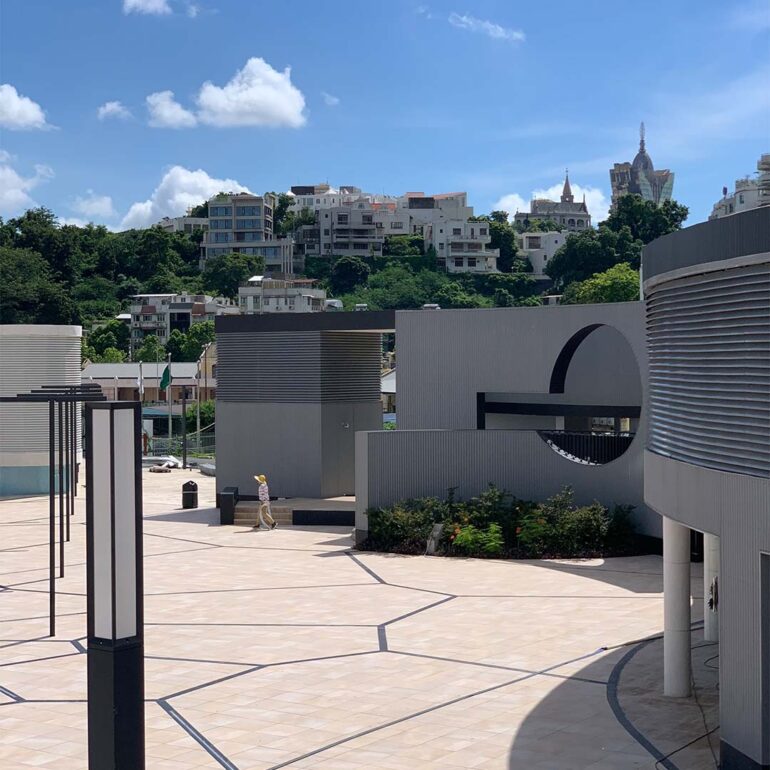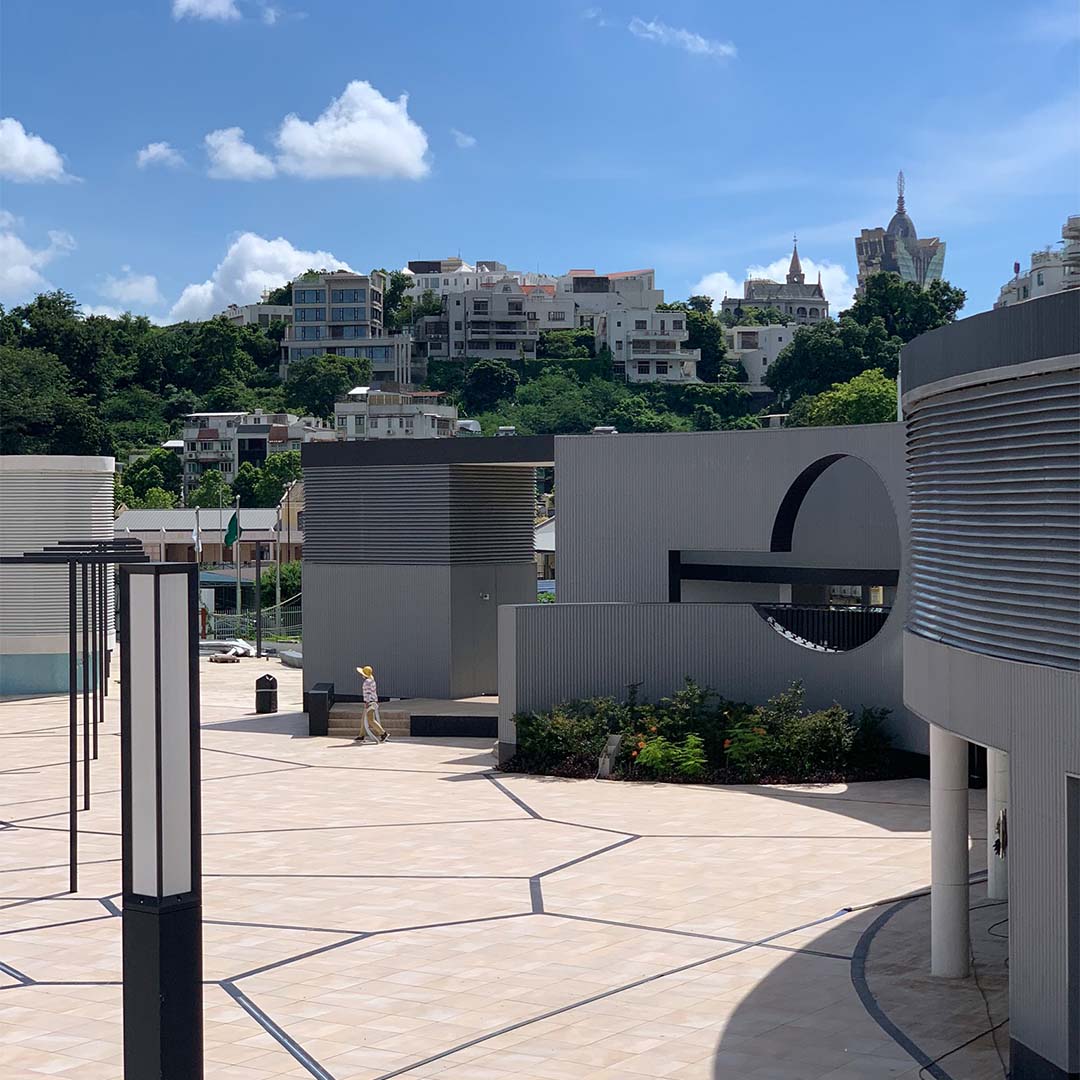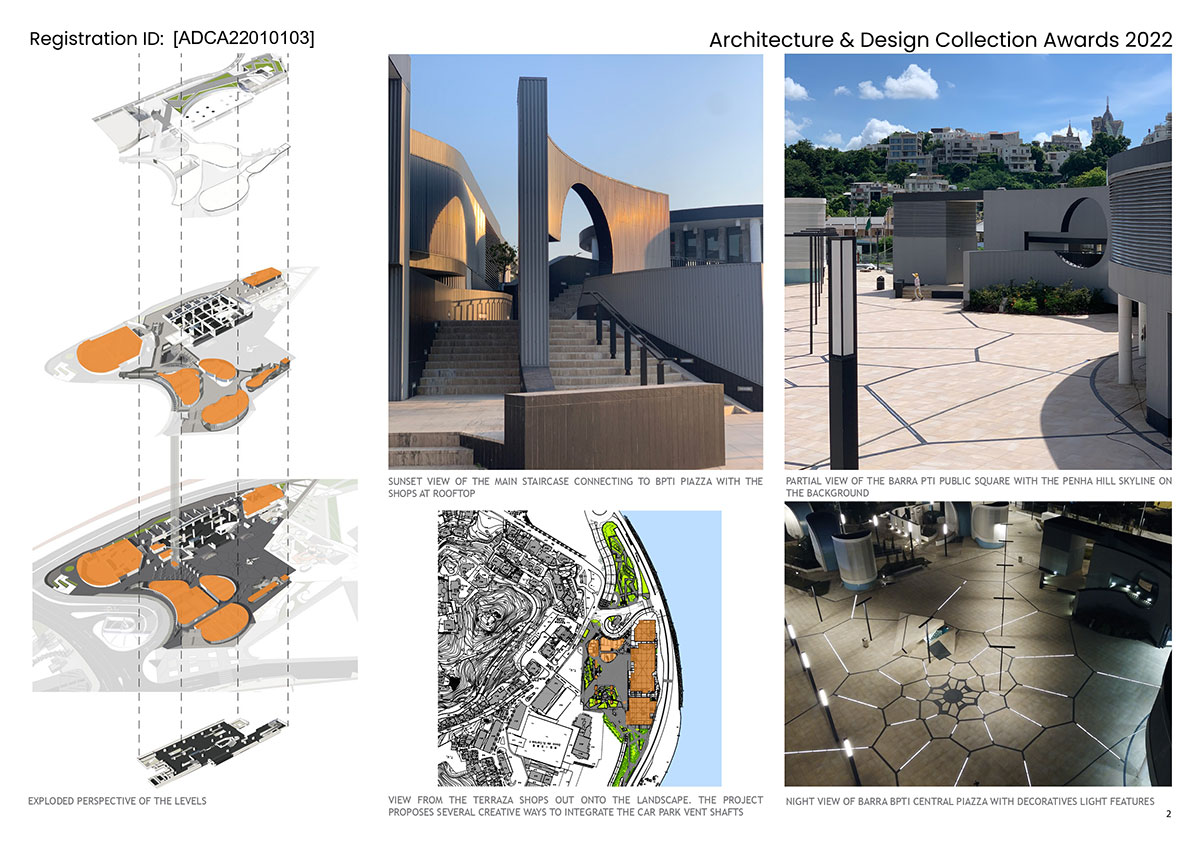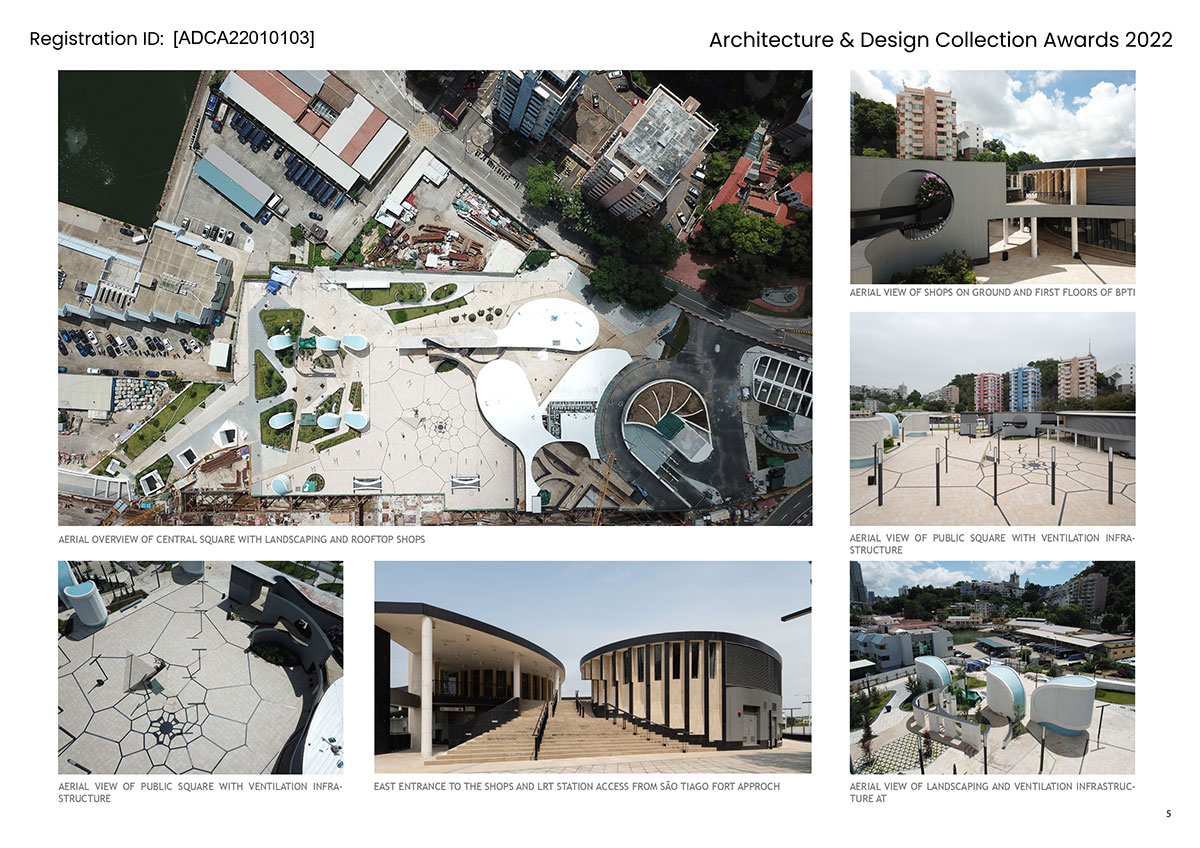Barra Public Transport Interchange


Architect / Designer:
Studio:
Country:
The Barra Public Traffic Interchange is an underground station and parking facility for public tourist coach and private cars. It is located in Macau in the Barra district. The intervention area is 35.957 m² and it extends from the Sai Van Lake corner in front of the S.Tiago Fortress to the D. Carlos dockyard.
The building is formed by 3 floors and 2 over ground floors organized in a double deck public space. The 2 underground levels of public bus terminus are at grade with LRT Station 12 platforms. The Barra PTI project is articulated with the LRT Station to optimize the transfer between Train, Bus, Taxis and private car, and provide a seamless experience of the Ma Kok and inner Harbour Historical District.
The green roof creates an elevated public space, creating a suspended natural landscape offering a commercial zone with many services, inviting to leisure.
Our focus centered on emptying-up of the core of the site and creating an outreaching pedestrian network. By sinking the bus terminus and shifting the ventilation infrastructure to the side, we allowed the project to build around an urban void and design the roof so that could incrementally unfold to lay out a rooftop park connecting the public buildings planned for the district, including a border crossing building to mainland China, the Maritime Museum, and Station 12. This allowed people to walk across the district without interference with the traffic flow.
The project was a real planning exercise, implicating the re-design of the road layout making space for the future buildings, train tracks and road tunnels. With water on three different directions between the old and the new waterfronts, our intention to transform the site into a public square allowed the new transportation project to interface with the whole historic district with a new pedestrian system.
The roof of the PTI is filled with mitigated infra-structure, yet the project still proposes two major spaces that organize the idea of a civic space away from the car: one in the shape of a triangular piazza, at level +8.20MSL with commercial units clustered around it, and in tie-up with Station 12, a system of bridges connecting all sides of the project, revealing the void below, where people will be moving in and out of the station.
The site was a geographical gap: discontinuity between the old Chinese city on the west and the extension of the Portuguese settlement to the East. The potential of this project resided in bridging these two historic urban districts and devising new typologies for making them walkable and a continuous visual experience, thus closing the discontinuity between the two most significant historic urban constructs of Macau.
Sinking the bus terminus, and shifting the ventilation infrastructure to the side, allowed the project to build around an urban void and design a roof that could incrementally unfold to lay out a rooftop park connecting all the planned public buildings. This allowed a seamless pedestrian circulation throughout the old and new waterfronts.







